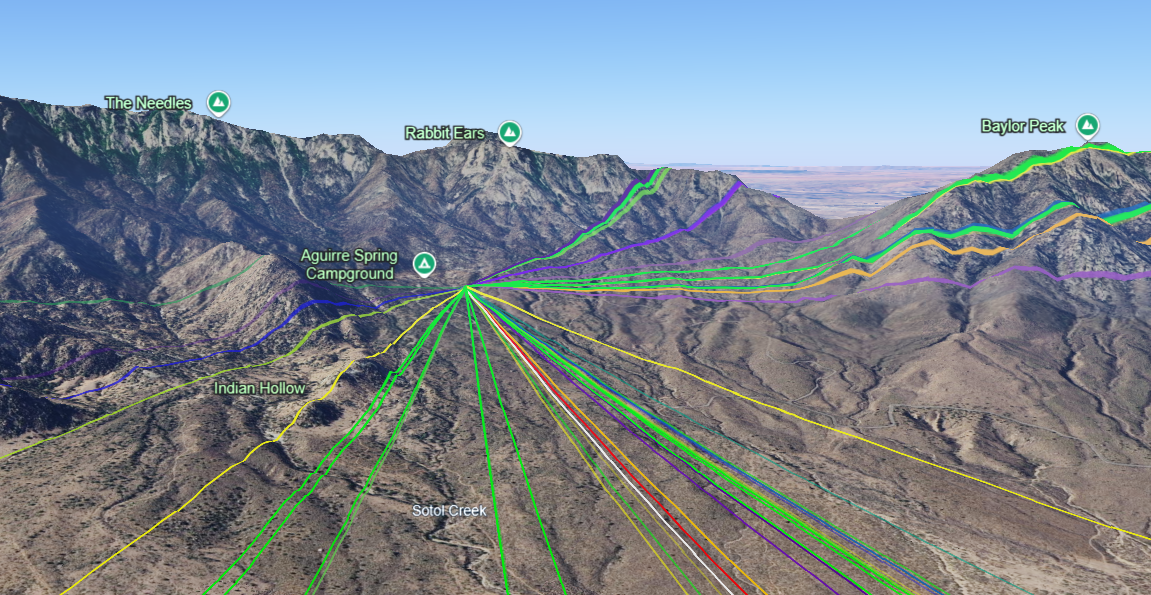I'd heard that a tent pole wouldn't work well as an antenna mast, but it's all we had.
I've heard from folks that a tent pole might not be the best antenna support. They're probably right, but on our last flight from San Francisco to El Paso, TX, I was a bit tired, and completely forgot our carbon fiber collapsible mast—which also isn't supposed to work—in the overhead bin above my seat. So, what we had was a tent pole!
The above picture shows how to work with a tent pole mast that's shorter in length than a quarter wavelength long. You simply attach the pole to something—anything really—in nature that will provide the extra bit of required height. As far as processes go, the simplest way to figure out the first tape point to attach the wire to the mast is to hold the wire on the mast where the tree, or in this case the campsite marker,will support the mast and drape the wire down to the rig. In this way, you know that your vertical antenna will be supported above the ground. In the next picture, you might note that this occasionally leaves a bit of the vertical antenna hanging above the mast depending on the height of the support you manage to find.
To connect the mast to its ground support, we simply lash it with electrcial tape. Occasionally, a tree is accomdating enough that we can simply set the base of the tent pole in a Y formed by two branches with additional branches above supporting the mast to keep it vertical.




Comments
Post a Comment
Please leave your comments on this topic: